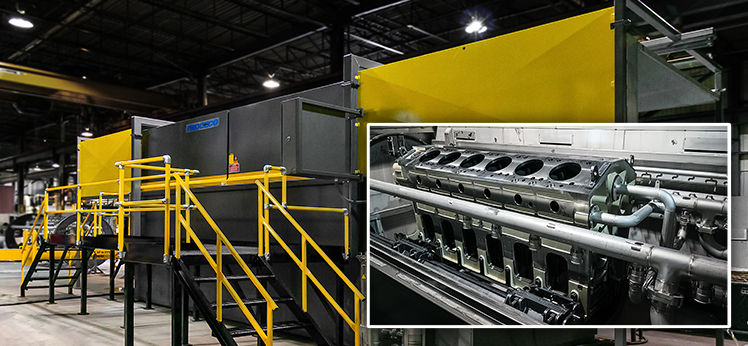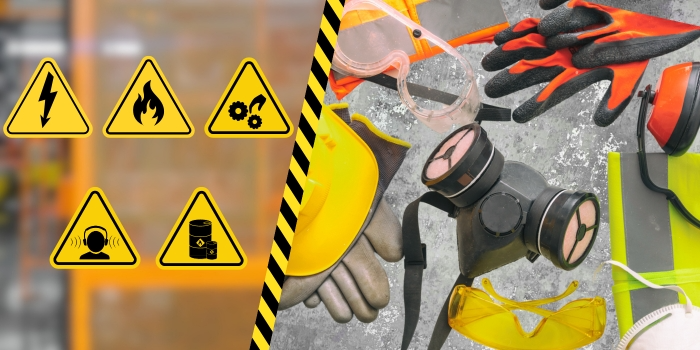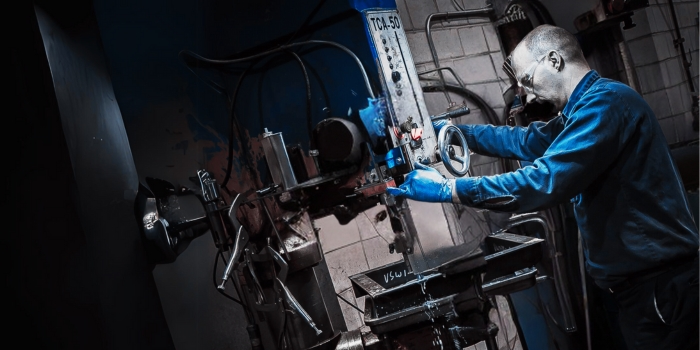Many industrial aqueous parts washers work at 140°F or higher; however, certain applications don't need such high temperatures. Cleaning at lower temperatures (120°F or less) can still meet cleanliness standards in these cases and has other benefits for the process as well. Let us take a closer look.
Benefits of Low-Temperature Aqueous Parts Cleaning
Reduces Energy Needs: One of the most obvious benefits of using lower temperatures for water-based cleaning is that it saves energy. Cleaning at a lower temperature can save you money and reduce your overall energy use, as cleaning at a higher temperature requires more resources. Higher temperatures also increase evaporation, necessitating more effective ventilation, which in turn further increases the need for additional equipment, water, and energy.
Streamlines Manufacturing Processes: Manufacturing processes may be disrupted by higher temperatures during aqueous cleaning. High-temperature causes parts to heat up during cleaning, which can lead to expensive process issues later on. This can be fixed by putting cooling in place before downstream procedures like leak testing, gauging, and assembly. However, lowering the wash temperature may do away with the need for cooling, which would require less equipment and save money.
Avoids Part Discolouration: When you clean brass, aluminium, and other soft alloys at higher temperatures, the surfaces can change colour. Cleaning at a lower temperature helps you avoid these problems and gives you better results.
Enhances Comfort and Safety for Operators: Cleaning at high temperatures may cause burns and overall discomfort due to the hot and humid environment. Low-temperature cleaning may lead to more consistent and productive work because it is safer and more comfortable for the operator doing the cleaning.
Extends Cleaning Solution Life: Elevated temperatures hasten evaporation, resulting in the depletion of essential detergent additives. Dissolved solids build up when plant water is used to replace this loss, which worsens cleaning effectiveness. On the other hand, working at lower temperatures facilitates oil separation and lessens evaporation, which makes it more effective to skim oils off the bath surface.
Cons of Low-Temperature Aqueous Cleaning
There are several benefits to cleaning at low temperatures, but one significant drawback is that it can be more challenging to dry the parts. When there is less heat stored in the component, flash evaporation on the part surfaces doesn't work as well. To speed up drying, more equipment is needed.
Thankfully, there are effective drying solutions available to enhance this procedure. PROCECO offers a selection of blow-off or drying modules to ensure your parts are dry. For more information, see our white paper "Drying after Aqueous Parts Cleaning" or get in touch with us to talk about your specific needs.
When Is Cleaning Aqueous Parts at Low Temperatures a Good Option?
Low-temperature aqueous cleaning is suitable for most new and in-process parts, but not all of them. Low-temperature cleaning can remove chips, shop dirt, metalworking fluids, and other types of debris. We advise testing to see if your application permits a low-temperature cleaning process. The test lab at PROCECO has everything you need to assess your parts and decide if low-temperature cleaning is appropriate. Working together, we'll help you design the optimum process for your needs. So get in touch now, and let's get things started!
What Detergents Do You Need for Low-Temperature Parts Cleaning?
The primary requirement for detergents used in low-temperature spray washers is that they remain low-foaming, as excessive foam can cause pump cavitation and affect cleaning performance. All the leading detergent companies, including Proceco, can recommend formulations specifically designed for cleaning at low temperatures.
Many of these detergents are free-rinsing, contain corrosion inhibitors, are near-neutral in pH (which lowers disposal costs), and are environmentally friendly. Their efficacy in specific applications may even make rinsing unnecessary.
Does Cleaning of Parts at Low Temperature Require Special Equipment?
Standard aqueous washers and cleaning equipment intended for low-temperature operation are largely comparable. In some applications, the lower cleaning power of milder detergents and lower temperatures is offset by higher pump flow rates, higher spray pressure, or specially designed spray manifolds. Energy savings, less insulation, and a need for less ventilation frequently outweigh the extra expenses related to these improvements.
Final Thoughts
Lower-temperature cleaning delivers significant benefits! It could be ideal if you're aiming to reduce your environmental impact, cut costs, improve workplace safety, and maximize the efficiency of your parts cleaning equipment.
|
If you're unsure, set up a call with us, and we'll determine whether low-temperature cleaning is the ideal solution for your needs. |
.jpg?height=400&name=Post%20Banner%20(3).jpg)


